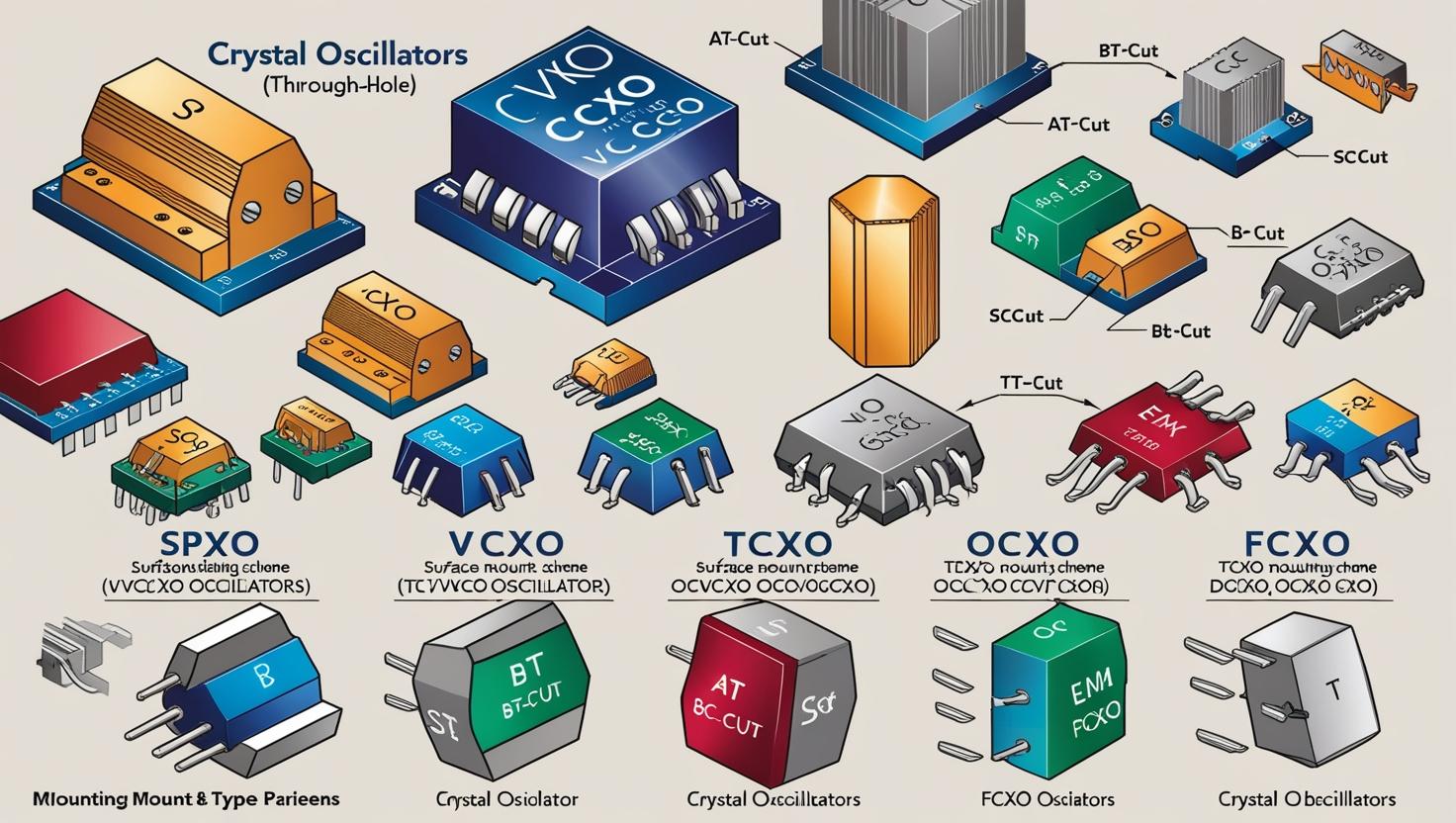As global industries increasingly rely on precision timing and stable signal transmission, crystal oscillators have become essential components powering the backbone of modern electronics. From smartphones and laptops to base stations and satellites, these compact devices are playing a pivotal role in enabling high-speed communication, reliable data transfer, and seamless user experiences. With growing demand for faster, smarter, and more connected devices, the crystal oscillator market is thriving—driving innovation across telecommunications and consumer electronics alike.
Precision Timing in a Connected World
At the core of every digital system is a timing source, and crystal oscillators are among the most widely used components for this purpose. They generate highly accurate clock signals by using the mechanical resonance of a piezoelectric crystal—typically quartz. This stable frequency output is critical for synchronizing operations in integrated circuits, data transmission protocols, and wireless communication systems.
In both telecommunications infrastructure and consumer electronics, where timing errors can lead to data loss, signal degradation, or dropped connections, the importance of crystal oscillators cannot be overstated.
Telecommunications: Enabling Next-Gen Connectivity
The global rollout of 5G networks and the expansion of fiber-optic broadband have significantly increased the demand for high-performance crystal oscillators. These applications require ultra-low phase noise and high-frequency stability to support high-speed data transmission, network synchronization, and time-sensitive applications.
In cellular base stations, small cells, routers, and satellite systems, crystal oscillators ensure seamless frequency alignment across components and enable technologies like beamforming, massive MIMO, and time-division duplexing (TDD). Oscillator types such as temperature-compensated crystal oscillators (TCXOs) and oven-controlled crystal oscillators (OCXOs) are increasingly used to meet the stringent requirements of telecom-grade performance.
Download PDF Brochure @ https://www.marketsandmarkets.com/pdfdownloadNew.asp?id=943

Consumer Electronics: Powering Portability and Performance
In the consumer electronics space, devices are becoming more compact, feature-rich, and always connected. Smartphones, tablets, gaming consoles, wearables, and smart home devices rely on crystal oscillators for everything from clock generation and Bluetooth pairing to GPS synchronization and processor timing.
As consumer demand rises for faster refresh rates, better audio-visual synchronization, and reliable connectivity, crystal oscillator manufacturers are responding with miniaturized, low-power, and cost-effective designs. Surface-mount device (SMD) crystal oscillators are now standard in many compact consumer gadgets, offering high reliability in a small footprint.
Additionally, with the growth of IoT and wearable technology, crystal oscillators are being optimized for ultra-low power consumption, enabling longer battery life without sacrificing timing accuracy.
Market Growth and Innovation
The global crystal oscillator industry is projected to grow worth $3.66 billion by 2030, driven by the twin forces of technological advancement and mass adoption across diverse verticals. According to industry analysts, the market is being propelled by:
-
Expansion of 5G networks and edge computing infrastructure
-
Rising sales of smartphones, tablets, and wearables
-
Adoption of autonomous systems in vehicles and drones
-
Growth in smart manufacturing and industrial automation
Manufacturers are investing in material science and MEMS (Micro-Electro-Mechanical Systems) technologies to deliver smaller, more energy-efficient oscillators without compromising on frequency stability. These innovations are helping to overcome the limitations of traditional quartz-based solutions, particularly in harsh environments and high-vibration settings.
Regional Dynamics
Asia-Pacific remains the largest market for crystal oscillators, home to leading consumer electronics and semiconductor manufacturing hubs in China, Japan, South Korea, and Taiwan. These regions dominate both production and innovation in the oscillator supply chain.
North America and Europe, meanwhile, continue to demand high-reliability oscillators for telecom infrastructure, aerospace, automotive, and defense applications. These markets value precision, quality, and regulatory compliance, contributing to the development of robust and advanced oscillator technologies.
Challenges and Outlook
Despite strong demand, the industry faces challenges such as component miniaturization limits, raw material supply fluctuations, and thermal stability under extreme conditions. However, ongoing R&D efforts and strategic collaborations are addressing these barriers with new design architectures and better packaging techniques.
Looking ahead, the integration of AI, IoT, and ultra-fast communication networks will only intensify the need for reliable timing components. Crystal oscillators, as the silent enablers of electronic precision, are set to remain at the forefront of this transformation.
Conclusion
From powering your smartphone to enabling global 5G networks, crystal oscillators are foundational to the digital age. Their ability to deliver accurate, stable, and efficient frequency control is key to innovation in telecommunications and consumer electronics. As connectivity becomes faster and more intelligent, the importance—and the market value—of these tiny yet powerful components will continue to grow.
